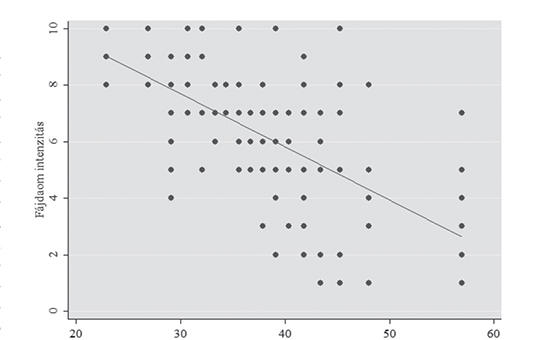[Pain intensity is the most frequently assessed health domain in clinical studies among patients with low-back pain. Visual analogue scale (VAS) and Numeric rating scale (NRS) have been the mostly used measurement tools for pain intensity. We proposed to correlate these instruments to a generic health-related quality of life measurement tool in order to show the scale with superior clinical relevance.
We used cross-sectional, convenience sampling. 120 patients with chronic low-back pain administered the 29-item Patient Reported Outcomes Measurement Information System Profile with NRS included, and the VAS scale in the National Institute of Mental Health, Neurology and Neurosurgery. We determined the correlation between PROMIS domain T-scores and VAS and NRS scores.
We performed Spearman rank correlation test to calculate the correlation coefficient. We found VAS scales measuring pain had weak to moderate correlations with all PROMIS health domains (r = 0.24–0.55). Therefore, we compared correlation of PROMIS domain scores with PROMIS pain intensity numeric rating scale and VAS scales. PROMIS domains had moderate to strong correlations with pain intensity scale (r = 0.45–0.71). PROMIS physical function short form [r = –0.65, 95% CI (–0.75) – (–0.55)] and PROMIS pain interference short form (r = 0.71, 95% CI 0.63 – 0.79) had the strongest correlation with pain intensity item.
NRS has showed greater correlation with PROMIS domain T-scores than VAS scale. This may prove that NRS has greater connection to another health domains, thus it correlated more to health-related quality of life than visual scale. We recommend NRS to use in further clinical studies conducted among patients with low-back pain.]




